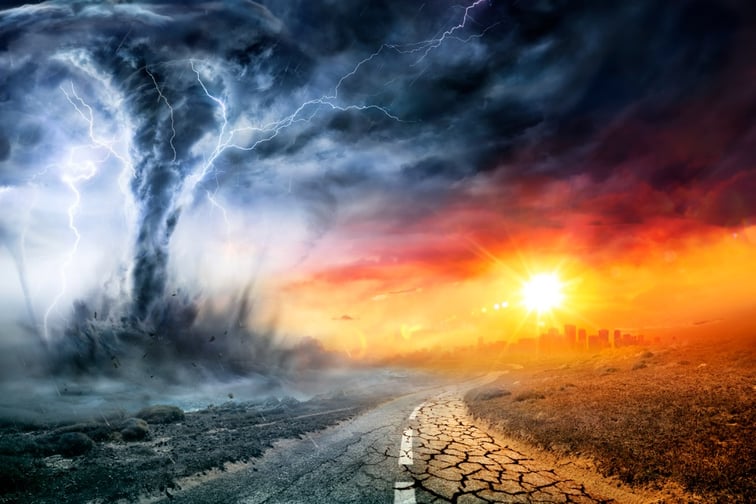

A series of winter storms in Europe, unprecedented flooding in Australia and South Africa, and a high number of thunderstorms in the US and Europe drove US$35 billion in insured losses from natural catastrophes in the first half, according to preliminary estimates from Swiss Re Institute.
Man-made catastrophes caused an additional US$3 billion in losses, pushing total insured catastrophe losses to US$38 billion. The record-high temperatures in many parts of Europe may lead to further losses caused by droughts and wildfires, Swiss Re said.
The report highlighted that natural catastrophes – particularly secondary perils – are increasing in frequency and severity in all regions.
“The effects of climate change are evident in increasingly extreme weather events, such as the unprecedented floods in Australia and South Africa,” said Martin Bertogg, head of catastrophe at Swiss Re. “This confirms the trend we have observed over the last five years – that secondary perils are driving insured losses in every corner of the world. Unlike hurricanes or earthquakes, these perils are ubiquitous and exacerbated by rapid urbanization in particularly vulnerable areas. Given the scale of devastation across the globe, secondary perils require the same disciplined risk assessment as primary perils such as hurricanes.”
In February, Europe was hit by a series of winter storms that spurred estimated insured losses of US$3.5 billion. In February and March, torrential rains caused widespread flooding in Australia. This set a new record for flood losses in the country at close to US$3.5 billion so far. For the insurance industry, it is one of the costliest natural catastrophes ever in Australia and the most expensive event globally in the first half of 2022 in terms of insured losses, Swiss Re said. Floods in South Africa, India, China and Bangladesh confirm the growing loss potential from floods in urbanized areas around the world.
Also in the first half of 2022, France was hit by severe weather including hailstorms and heavy rain, which have caused an estimated €4 billion in insured market losses so far, Swiss Re reported.
Two summer heat waves resulted in record-high temperatures across Europe and sparked forest fires across southwest Europe. The global average temperature in June was about 0.3°C higher than the 1991-202 average, making it the third-warmest June on record. With climate change predicted to exacerbate droughts, the likelihood of wildfires is also increasing, causing even greater damage where rapid urban sprawl overlaps the wildland-urban interface, Swiss Re said.
“Climate change is one of the biggest risks our society and the global economy is facing,” said Jérôme Haegeli, group chief economist at Swiss Re. “With 75% of all natural catastrophes still uninsured, we see large protection gaps globally, exacerbated by today’s cost-of-living crisis. Partnering with the public sector, the insurance industry is critical for strengthening society’s resilience to climate risks, by investing in and underwriting sustainable infrastructure.”
Global economic losses from natural and man-made catastrophes were estimated at US$75 billion for the first half of 2022, Swiss Re said. This is below the average of the past 10 years of US$80 billion.
